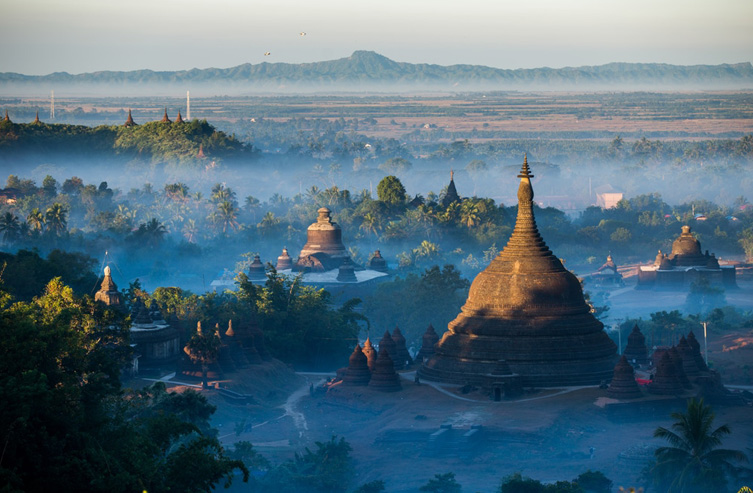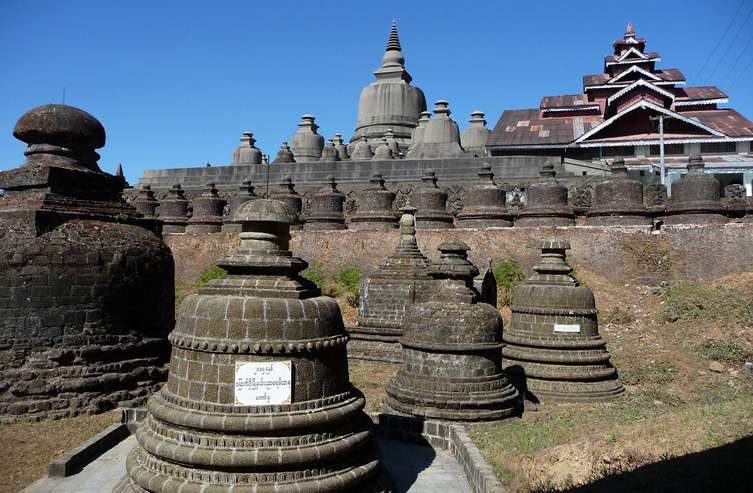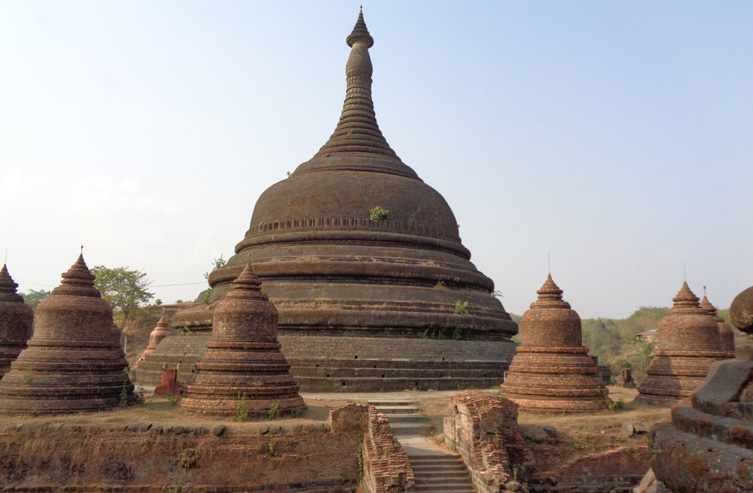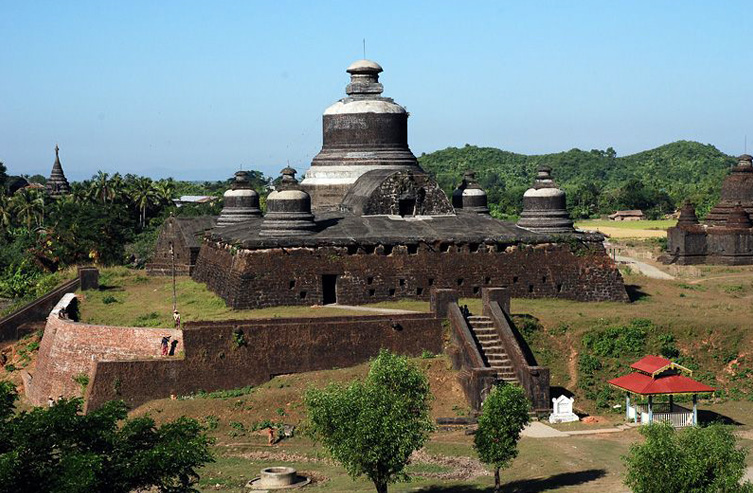Located in the western part of Myanmar in Rakhine State, Sittwe is a common stopping point for people route to the stunning Mrauk U. This port city of the Rakhine State sits at the mouth of the Kaladan River where it empties into the Bay of Bengal. It was an important trade centre during colonial times (when it was known as Akyab).
The quickest way to get to the city is by air, and there are flights from both Yangon and Mandalay. Buses are also available, although they do take a very long time. Try and avoid the coastal route if possible – this is easily the longest way to get to Sittwe!
One of the most popular places in Sittwe is called, simply, viewpoint. Located a few kilometres south of town, where the sea meets the Kaladan River, it features a small park and an old watchtower with panoramic 360degree views. Other sights worth seeing in Sittwe include Atulamarazein Pyilon Chan Tha Pagoda, Kyayoke, Mahakuthala Monastery, Adeilhtim Sima, the Buddha Museum and the Rakhine State Cultural Museum.
Sittwe is a great city for foodies and will be find delicious cuisine that is different to in other parts of the country. Traditional food from the area tends to be fairly spicy. There have not only spicy food but also have, other parts of the country, as well as Indian and Chinese dishes.
Mrauk U
Mrauk U is located between the Kaladan and Lay Myo rivers in Rakhine state in the Western part of Burma, near the Bay of Bengal. Mrauk-U is reached by six-hour boat journey from Sittwe and the location of the town is beautiful - it's surrounded by rich lush rolling hills, and wetlands too.
The old capital of Rakhine (Arakan) was first constructed by King Min Saw Mon in 1430 and remained its capital for 355 years. The site used to be the capital of the Mrauk U Kingdom, a powerful empire that existed from 1430 until 1785. The golden city of Mrauk U became known in Europe as a city of oriental splendour after Friar Sebastian Manrique visited the area in early 17th century. Father Manrique's vivid account of the coronation of King Thiri Thudhamma in 1635 and about the Rakhine Court and intrigues of the Portuguese adventurers fire the imagination of later authors. The English author Maurice Collis who made Mrauk U and Rakhine famous after his book, The Land of the Great Image based on Friar Manrique' travels in Arakan.
Shite Thaung Temple
The name of the Shite Thaung Temple means Temple of 80,000 Buddha Images', and is also known as the 'Temple of Victory'. Shite Thaung temple was built in 1535–1536 by King Min Bin to commemorate his conquest of Bengal. It is located on the western face of Pokhaung Hill, north of the Royal Palace, and adjacent to the Andaw-thein Temple. It is wonderful, in fact, is a fortress looks like a temple. After 5 centuries, the temple has become one of the most impressive monuments in Mrauk U. The real purpose of the pagoda was for prayer, some rituals of initiation, and some of the King’s ceremonies, which were usually held secretly. It was constructed six feet thick of solid sandstone and like "rock cave tunnel". No mortar was used in the construction and stones were connected with stone brackets. The shrine is said to encase 84, 000 holy relics of the Blessed one and it dedicated to the 84, 000 future Buddhas.
Andaw Thein Pagoda
The Andaw (meaning the tooth relic of Buddha) is a pagoda only 86 feet to the north-east of the Shitthaung Pagoda. This shrine was originally built by Min Hla Raza in 1521 A.D. The central tower of the shrine contains the tooth-relic of Buddha obtained from Sri Lanka by King Minbin. The shrine is an octagonal structure of pure sandstone, with two internal octangular concentric passages. Fifteen small circular pagodas, built of bricks stand on the platforms of south, north and west of the shrine. On the east, there is a prayer hall, which has an entrance each on the east, north, and south sides; a stonewall divides it from the outer court, which is also passed by a wall. There are two inner pavements inside the temple. On both walls of the first pavement there are small niches in which a total of 142 Buddha images are placed to be worshipped.
Htukkan Thein Temple
Htukkan (or Dukkhan) Thein Temple is one of the most famous temples in Mrauk U, meaning ‘Cross-Beam Ordination Hall’. Similar to several other temples in Mrauk U, Htukkanthein Temple is designed as a dual purpose ‘fortress – temple’. Built in 1571 by King Min Phalaung, the temple is a place to enshrine the statues of Buddha. Htukkan Thein is located about 300 feet to the north-west of Shitthaung Pagoda.
Htukkanthein attracts visitors from far away by its large central bell-shaped stupa which is topped with a circular mushroom on top of a flat surface and surrounded by four similar-in-shape but smaller-in-size stupas at the corners. There is a square window at the central dome, permitting the sun’s rays at dawn to lighten up the main Buddha image in the central chamber. There is a long vaulted passageway which leads to the central shrine room which is 15 feet in height. This room is said to be the place where the Buddhist Archbishop used to sit to discuss religious affairs with Senior Monks. See the seated stone ladies preserving in sculpture the ancient hairstyles, among the many other interesting figures. There are also 140 niches with Buddha images.
Koethaung Pagoda
Koe-thaung is one of the most worth-visiting places and also the largest one in Mrauk U. It was constructed in 1553 by King Min Dikkha, the son of King Min Bin who built the Shite-Thaung to gain religious merit. Koe-thaung means ‘shrines of the 90,000 images of the Buddha’. Koe-Thaung was hit harder than other Mrauk U structures due to its soft sandstone material. King Dikkha demanded the temple be finished in six months — he had smallpox and wanted to see it completed before his death. So instead of ferrying the hewn stone brick from its source some eighty miles away, the decision was made to use the closer sourced sandstone. The terrace that still remains is quite spectacular. A roofed passageway lined with Buddha statues surrounds the large pagoda at the center. These arched corridors offer a cool relief from the midday sun, where geckos can be found lounging on the many remaining Buddha statues.

 (+95-9) 7757 30372
(+95-9) 7757 30372








